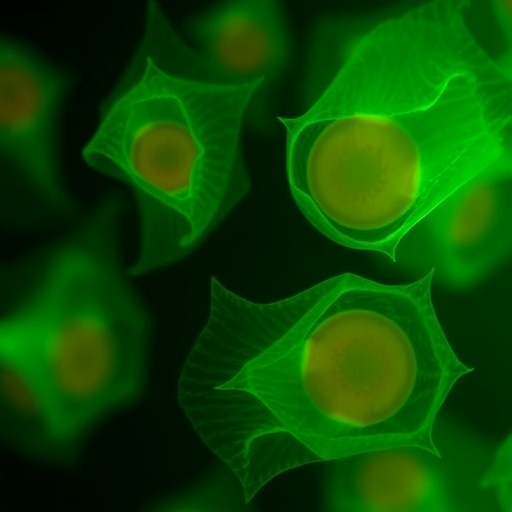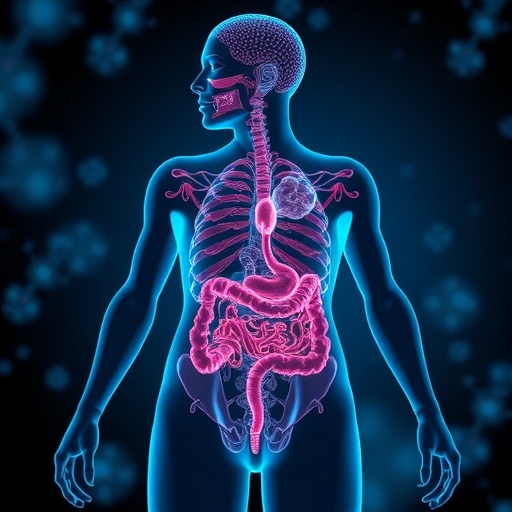Recent research has revealed a transformative approach to managing insulin resistance and high glucose-related cellular damage, particularly in trophoblast cells. The study, conducted by Wang et al., explores the potential effects of perillaldehyde, a natural compound traditionally utilized in flavoring and perfumery, and its capacity to mitigate the impacts of oxidative stress and ferroptosis in the context of trophoblastic functionality. This research is particularly significant as it delves into the significances of metabolic pathways that orchestrate cellular survival amidst the peril of hyperglycemia, a condition prevalent in various metabolic disorders such as Type 2 diabetes.
Insulin resistance, a primary feature of Type 2 diabetes, undermines the body’s ability to metabolize glucose efficiently. This condition leads to an array of complications, characterized not only by hyperglycemia but also by profound systemic disturbances, including heightened oxidative stress and ferroptosis, a form of programmed cell death driven by iron accumulation and lipid peroxidation. Such cellular mechanisms contribute to various pathophysiological states, and the quest for effective therapeutic intervention remains urgent and paramount.
The innovative research anchored by Wang et al. asserts that perillaldehyde can effectively attenuate the onset of insulin resistance. By acting on key signaling pathways, specifically the PTPN1/Akt/Foxo1 signaling cascade, perillaldehyde potentially revitalizes the normal cellular functions of trophoblasts. These placental cells play a critical role in fetal development, responsible for nutrient and gas exchange between mother and fetus; their dysfunction can result in adverse pregnancy outcomes, including gestational diabetes and fetal growth restrictions.
Notably, the study highlights the intricate relationship between perillaldehyde and the oxidative stress pathways activated by high glucose levels. High concentrations of glucose have been documented to disrupt normal trophoblastic functions, igniting pathways leading to cellular damage and eventual ferroptosis. Through the modulation of these crucial pathways, the researchers elucidate how perillaldehyde can rebalance cellular homeostasis, counteracting the detrimental effects wrought by excess glucose.
The utilization of trophoblast cells in this investigation was particularly strategic. As key players in embryonic development and maternal-fetal interactions, trophoblasts serve as an excellent model for studying the implications of insulin resistance in pregnancy. By conducting experiments that ascertain the protective effects of perillaldehyde against high-glucose-induced ferroptosis, the study adopts a preventative therapeutic framework, aligning with contemporary objectives in managing gestational diabetes and associated disorders.
Among the pioneering discoveries, it was observed that perillaldehyde not only ameliorated the adverse effects of hyperglycemia but also enhanced cellular viability in trophoblast cultures under oxidative stress. Employing a range of assays and molecular techniques, the researchers tracked significant reductions in markers of oxidative stress while simultaneously elevating antioxidant defense mechanisms. These findings underscore the potential of pharmacological agents derived from natural products to address metabolic dysregulation without extensive toxicological risks.
The insights gathered from the study raise essential discussions around the therapeutic potential and applicability of perillaldehyde in clinical settings, particularly concerning its role in the management of insulin sensitivity. The implications of this research extend towards lifestyle modifications that include dietary interventions rich in plant-derived compounds, promoting preventive healthcare strategies. In a landscape where Type 2 diabetes prevalence continues to escalate globally, harnessing natural pharmacological agents could revolutionize therapeutic avenues.
Moreover, the study’s outcomes align with a broader push within the scientific community to explore less conventional avenues for treatment, emphasizing a paradigm shift towards integrative medicine. The prospect of combining lifestyle alterations with natural interventions positions patients at a vantage point in managing chronic conditions, fostering a multidisciplinary approach that reflects contemporary healthcare trends.
Wang et al. thoroughly dissect the intricate balance of signaling pathways influenced by perillaldehyde and provide a robust framework for future exploration. Research initiatives aiming to target metabolic pathways can build on these findings, especially considering the myriad of conditions that stem from insulin resistance and oxidative stress. Importantly, this study propels the understanding of how naturally occurring substances could serve as keystones for therapeutic development.
As the investigation into the signaling mechanisms deepens, the critical role of the PTPN1/Akt/Foxo1 pathway in regulating cellular destiny continues to emerge as fundamental. This research underscores the necessity of targeted interventions that can engage these pathways effectively, paving the way for novel treatment paradigms centered around metabolic health.
In conclusion, the implications of perillaldehyde’s protective effects herald a promising frontier in metabolic disease management. The insights drawn from this study not only elevate the discourse surrounding insulin resistance but also advocate for a multidisciplinary methodology in treating complex health issues. As research continues to unravel the multifaceted nature of metabolic syndromes, the role of natural products in contributing to therapeutic efficacy will undoubtedly take center stage.
This foundational work by Wang et al. serves as a compelling reminder of the ripe potential harbored within natural compounds. The call for further research on perillaldehyde and its derivatives is not only timely but necessary, as the world grapples with an escalating diabetes crisis. With strategic clinical applications, perillaldehyde has the potential to not only alter individual health trajectories but also redefine how society addresses insulin resistance and its cascading effects across populations.
Subject of Research: Investigation of the effects of perillaldehyde on insulin resistance and ferroptosis in trophoblast cells.
Article Title: Perillaldehyde Attenuates Insulin Resistance and High Glucose-Induced Ferroptosis in Trophoblast Cells via Regulation of PTPN1/Akt/Foxo1 Signaling Pathway.
Article References:
Wang, X., Lu, Y., Wang, S. et al. Perillaldehyde Attenuates Insulin Resistance and High Glucose-Induced Ferroptosis in Trophoblast Cells via Regulation of PTPN1/Akt/Foxo1 Signaling Pathway.
Reprod. Sci. (2025). https://doi.org/10.1007/s43032-025-02008-0
Image Credits: AI Generated
DOI:
Keywords: Perillaldehyde, Insulin Resistance, Ferroptosis, Trophoblast Cells, PTPN1, Akt, Foxo1, Metabolic Health, Natural Compounds.
Tags: cellular survival mechanismsferroptosis in metabolic disordersflavoring compounds in medicineglucose metabolism efficiencyhyperglycemia effectsnatural compounds in therapyoxidative stress mitigationperillaldehyde and insulin resistancePTPN1/Akt/Foxo1 signaling pathwaytherapeutic interventions for diabetestrophoblast cell functionType 2 diabetes research





